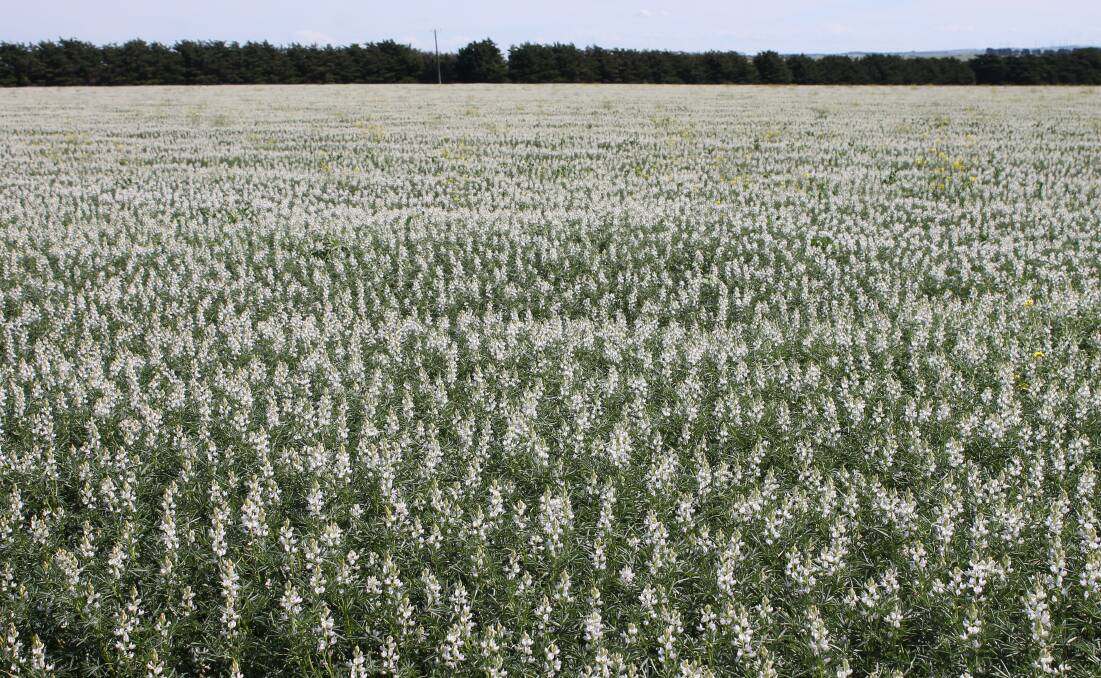
IN SPITE of the enormous demand for grain and fodder from the eastern states, which has seen a steady procession of ships carrying animal feed from WA to eastern ports, disease concerns mean lupins are unlikely to be among the shipments.
Tough restrictions in NSW, and to a lesser extent Victoria, are in place to minimise the threat of the devastating lupin anthracnose disease, with NSW not accepting any lupin seed from WA or SA, where the disease is found.
Lupin anthracnose is a fungal disease that can cripple the pulse crop.
It occurs around the globe, but New South Wales and Victoria are both currently free from the disease.
Victoria requires certification for lupin grain imports, with none to be used for sowing, and has no specific regulations surrounding the importation of lupin hay or hay that could contain lupin material.
In NSW there can be no lupins in seed or plant form brought in from WA or SA and all fodder products require a vendor declaration to assure there is no material that may contain lupin anthracnose.
On the flip side, WA farmers are being urged to be careful they do not leave themselves liable for penalties due to inadvertently transporting lupin material to areas it is not allowed or requires a declaration.
While lupins have been relegated to the role of a niche crop in the eastern states, the legume remains far and away WA’s most important pulse crop.
It’s ability to tolerate sandy, high acid soils, compared to other pulses which struggle on soils with pHs less than 6, means it is still widely grown in the west.
This year, the December Crop report from the Australian Bureau of Agricultural and Resource Economics and Sciences (ABARES) estimated around 600,000 tonnes would be grown in WA in 2018-19.
The reluctance to accept lupin material in NSW comes from a desire to remain anthracnose free.
There was a case reported in the Riverina in 2016 but since there it has remained unsighted.
NSW DPI director of plant biosecurity and product integrity Satendra Kumar said lupin in seed form for sowing, stock feed and fodder from Western and Southern Australia is prohibited in NSW due to it being a pathway of introduction of anthracnose.
“People handling, transporting or receiving fodder, as well as lupin growers play an important role in continuing to keep this disease out, to the very great benefit of our growers,” Dr Kumar said.
“The lupin growers in NSW are at a distinct advantage in terms of the lupin varieties that can be grown and low costs of production, as there is no need to apply foliar fungicides.
“This advantage can be easily lost if lupin anthracnose gets established in NSW, with research showing that one infected seed in 10, 000 is sufficient to cause a disease epidemic, in a suitable season.”
“Restrictions put in place in 1997 by NSW Agriculture have been highly effective in protecting NSW lupin producers from anthracnose entry and establishment in NSW,” Dr Kumar said.
Grain lupins are good source of protein for livestock.
In terms of fodder, it is more likely the lupin matter would be brought in through fodder made from a different crop rather than lupins on their own.


